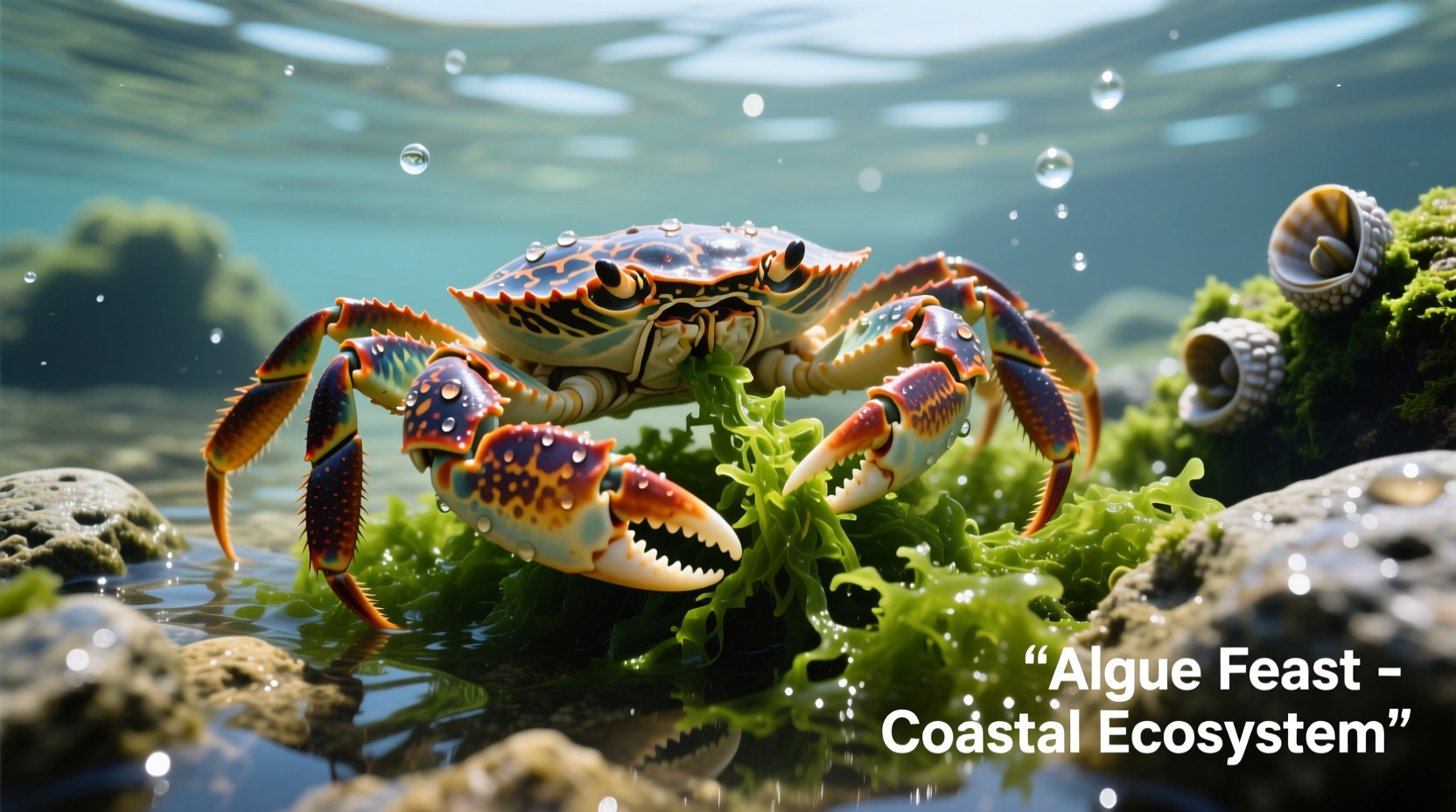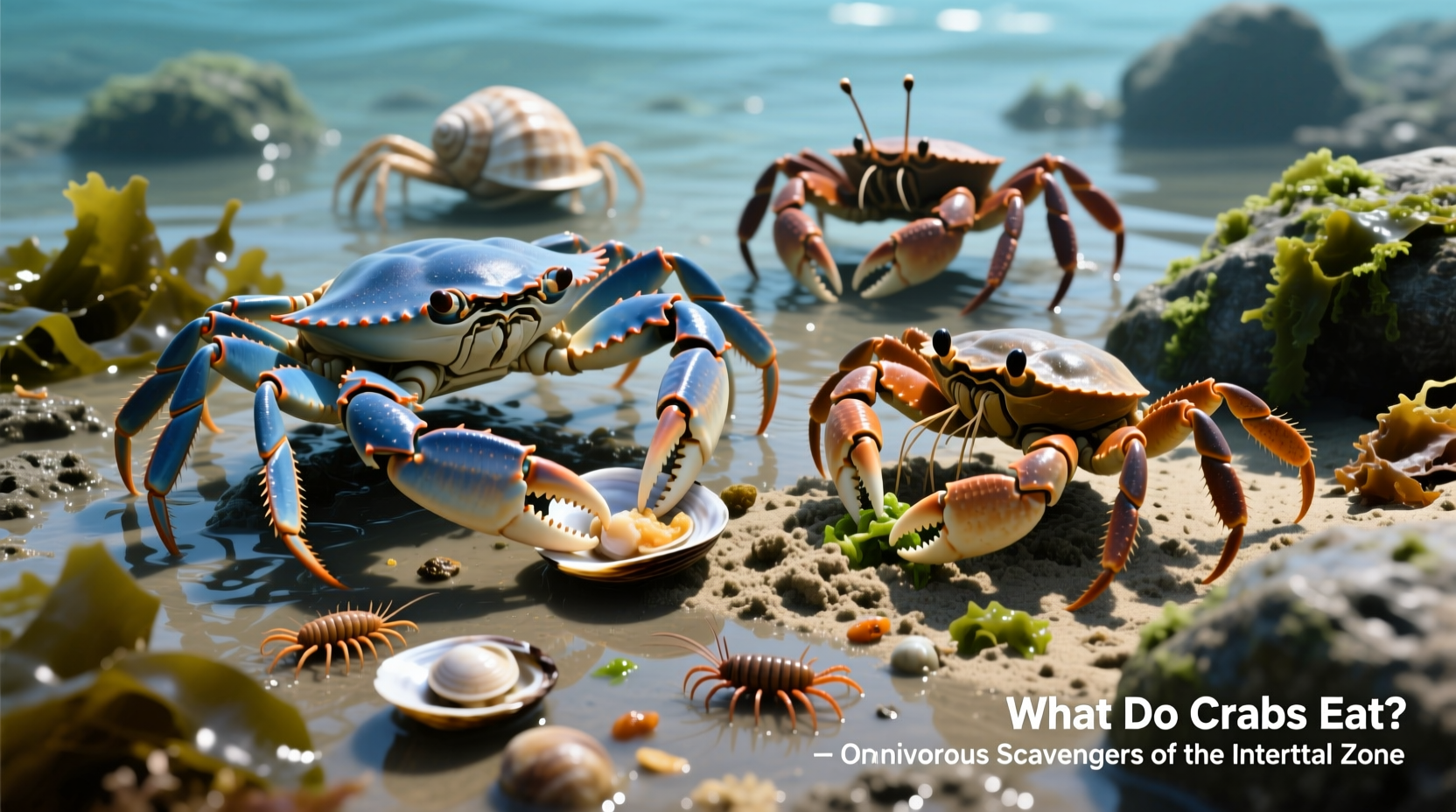Understanding what crabs eat reveals fascinating insights about marine ecosystems and proper care for pet crabs. Whether you're a marine biology enthusiast, aquarium hobbyist, or simply curious about these fascinating crustaceans, knowing their dietary needs helps you appreciate their ecological role and ensures proper nutrition if keeping them as pets.
Crab Feeding Fundamentals
Crabs operate as nature's cleanup crew across various ecosystems. Their opportunistic feeding behavior makes them essential for maintaining ecological balance. As omnivores with a preference for protein, crabs use their specialized claws to capture prey, crush shells, and manipulate food toward their mouths.
Research from the National Oceanic and Atmospheric Administration confirms that crabs' dietary flexibility allows them to thrive in diverse environments from deep ocean floors to tropical shorelines. This adaptability explains why they've survived for over 200 million years with relatively few evolutionary changes.
| Crab Type | Primary Food Sources | Unique Feeding Behavior |
|---|---|---|
| Blue Crabs | Mollusks, small fish, detritus | Use powerful claws to crack shells |
| Fiddler Crabs | Algae, microorganisms, detritus | Sift sand through specialized claws |
| Hermit Crabs | Fish scraps, plankton, vegetation | Cannibalistic when food scarce |
| Coconut Crabs | Fruit, carrion, other crabs | Climb trees to access food |
Wild Crab Diets by Habitat
Crab feeding habits differ dramatically based on their environment. Marine crabs typically consume more animal protein, while land-dwelling species incorporate more vegetation into their diets.
Ocean Dwellers
Deep-sea crabs primarily scavenge for dead organisms that sink from above, while intertidal species like Dungeness crabs actively hunt clams, mussels, and small fish. According to marine biologists at the Smithsonian National Museum of Natural History, some species like the spider crab form symbiotic relationships with algae that grow on their shells, providing both camouflage and supplemental nutrition.
Coastal and Intertidal Zones
Fiddler crabs exemplify specialized feeding in these areas. They consume microalgae and organic particles by sifting through sand with their smaller claw while using their larger claw primarily for mating displays. This efficient feeding mechanism allows them to process up to 30 sand balls per minute during low tide.
Terrestrial Environments
Land crabs like the Christmas Island red crab have evolved to consume primarily plant matter including fallen fruits, flowers, and leaf litter. During migration season, they'll opportunistically consume insects and even other crabs. Coconut crabs, the largest land arthropods, have been documented climbing coconut trees and dropping the fruit to access the nutritious meat inside.

Crab Feeding Mechanics
Crabs employ sophisticated feeding techniques that vary by species. Their claws serve multiple functions beyond just capturing food:
- Crushing claws - Thick, powerful claws for breaking shells
- Cutting claws - Sharp, precise claws for tearing flesh
- Sifting claws - Fine structures for filtering microorganisms
After capturing food, crabs use specialized mouthparts called maxillipeds to manipulate and process food before ingestion. Their digestive system includes a gastric mill that grinds food into digestible particles, similar to a bird's gizzard.
Feeding Pet Crabs Properly
Providing appropriate nutrition for pet crabs requires understanding their natural dietary needs. Many health problems in captive crabs stem from improper feeding.
Marine Aquarium Crabs
For saltwater species like emerald crabs:
- Offer algae wafers and blanched vegetables 3 times weekly
- Supplement with frozen brine shrimp or mysis shrimp
- Include calcium-rich foods like crushed coral for shell health
- Avoid overfeeding which can pollute tank water
Land Crab Care
Hermit crabs and other terrestrial species require:
- Fresh fruits and vegetables daily (avoid citrus)
- Protein sources 2-3 times weekly (cooked fish, shrimp)
- Calcium supplements for proper molting
- Multiple freshwater and saltwater sources
According to the American Society of Ichthyologists and Herpetologists, improper nutrition accounts for over 60% of health issues in captive crabs. Many owners mistakenly feed them exclusively commercial pellets, which lack necessary variety.
Common Crab Diet Misconceptions
Several myths persist about crab feeding habits that can lead to improper care:
- "Crabs only eat dead things" - While they're excellent scavengers, many species actively hunt live prey
- "All crabs eat the same food" - Dietary needs vary significantly between species
- "Crabs can survive on fish food alone" - They require diverse nutrition including plant matter
- "Crabs don't need fresh water" - Even marine crabs require access to freshwater
Understanding these distinctions prevents common feeding mistakes that compromise crab health and longevity.
Seasonal and Life Stage Dietary Changes
Crab diets evolve throughout their life cycle and with seasonal changes:
- Larval stage - Consume microscopic plankton
- Adolescent crabs - Require more protein for growth
- Adult crabs - Shift toward more balanced omnivorous diet
- Molting periods - Need increased calcium intake
- Reproductive season - Require additional protein for egg production
This dietary progression reflects their changing physiological needs and represents an important consideration for both ecological understanding and proper captive care.
Conclusion: Supporting Crab Health Through Proper Nutrition
Whether observing crabs in the wild or caring for them as pets, understanding their dietary needs is crucial. By providing appropriate nutrition that mimics their natural feeding habits, you support their health, longevity, and natural behaviors. Remember that variety forms the cornerstone of proper crab nutrition—no single food source can meet all their requirements.











 浙公网安备
33010002000092号
浙公网安备
33010002000092号 浙B2-20120091-4
浙B2-20120091-4